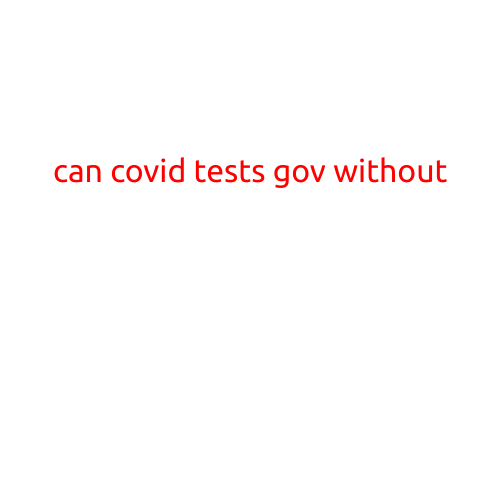
Can COVID Tests Go Wrong Without Being Faulty?
The COVID-19 pandemic has brought with it a host of new challenges, including the development and implementation of various testing methods to detect the virus. PCR (polymerase chain reaction) tests, antigen tests, and antibody tests are just a few examples of the different types of tests that have been approved for use in diagnosing COVID-19.
While these tests have been widely touted as effective in detecting the virus, there have been reports of instances where the tests have yielded false negative or false positive results. But can COVID tests really go wrong without being faulty?
What is a false negative result?
A false negative result occurs when a test fails to detect the presence of the COVID-19 virus when, in fact, the individual is infected. This can have serious consequences, including delayed treatment, transmission of the virus to others, and potentially even death.
What is a false positive result?
A false positive result, on the other hand, occurs when a test indicates the presence of the COVID-19 virus when, in fact, the individual is not infected. This can also have serious consequences, including unnecessary isolation, stress, and anxiety.
Why do false results occur?
False results can occur due to a variety of reasons, including:
- Inadequate sample collection: If the samples are not collected properly, it can lead to false results.
- Poor test sensitivity: Some tests may not be sensitive enough to detect the virus in the early stages of infection.
- Cross-contamination: Exposure to contaminated materials or surfaces can lead to false positive results.
- User error: Errors made by the person conducting the test, such as misreading the results or incorrect handling of the test kit, can lead to false results.
- Inaccurate interpretation: Incorrect interpretation of the test results can also lead to false results.
What can be done to minimize the risk of false results?
To minimize the risk of false results, several measures can be taken, including:
- Proper sample collection: Samples should be collected in accordance with the manufacturer’s instructions.
- Testing in a controlled environment: Testing should be done in a controlled environment to minimize the risk of cross-contamination.
- Use of high-quality test kits: Only high-quality test kits approved by regulatory agencies should be used.
- Proper handling and storage: Test kits and samples should be stored and handled properly to prevent contamination.
- Training and education: Healthcare workers should receive proper training and education on how to perform the tests and interpret the results.
Conclusion
While COVID tests can go wrong without being faulty, there are steps that can be taken to minimize the risk of false results. It is essential to use high-quality test kits, properly collect and handle samples, and conduct testing in a controlled environment. Additionally, healthcare workers should receive proper training and education on how to perform the tests and interpret the results.
References
- World Health Organization. (2020). COVID-19 Laboratory Testing.
- Centers for Disease Control and Prevention. (2020). COVID-19 Testing.
- National Institute of Allergy and Infectious Diseases. (2020). COVID-19: What You Need to Know.
Note: This article is for informational purposes only and should not be considered as medical advice. Please consult with a healthcare professional for any medical concerns or questions.





